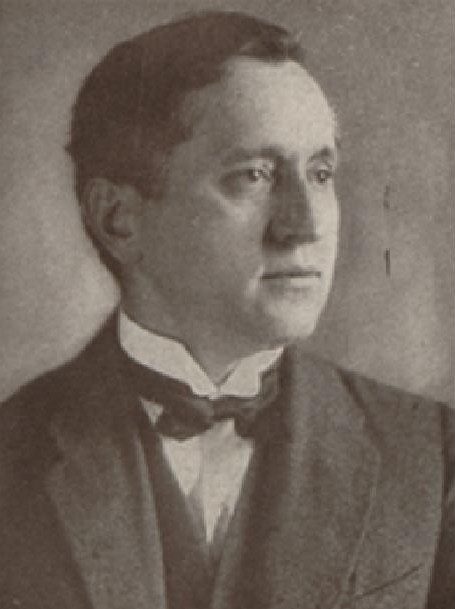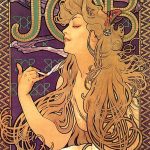
Josef Loukota remains one of Czech art’s unsung heroes, a painter and illustrator who embodied the cultural and political transformations of his time. His works capture the beauty, struggles, and aspirations of early 20th-century Czech society, blending technical mastery with a profound sense of national identity. This article will delve deep into the life, influences, and artistic journey of Josef Loukota, providing an insightful exploration into his contributions to Central European art.
Early Life: A National Identity in Formation
Born on June 28, 1879, in the town of Hranice, Josef Loukota entered a world teeming with cultural ferment. At that time, Hranice was part of the Austro-Hungarian Empire, a multi-ethnic entity that suppressed many of its minority cultures, including the Czechs. Loukota grew up during a period when Czech nationalism was rising, and artists like him would play a crucial role in shaping a distinct Czech identity.
Loukota’s father, Josef Loukota Sr., was a local craftsman, and his mother, Božena Loukotová, shared her son’s love for traditional Czech folktales. From an early age, Loukota was exposed to the stories and myths that would later permeate his work. His love for these tales would eventually manifest in his detailed and evocative illustrations. It was clear early on that young Josef possessed artistic talent, and his parents encouraged him to pursue it professionally.
Education: Shaping a Master of His Craft
Loukota’s formal art education began in Prague, where he attended the prestigious School of Applied Arts in 1896. Here, he studied under the mentorship of noted Czech artists like K.V. Mašek, a painter known for his historical and allegorical works. During this time, Loukota honed his skills in drawing and painting, developing a style that fused realism with symbolic elements, much like his mentors.
From 1899, Loukota continued his studies at the Prague Academy of Fine Arts, where he studied under Václav Brožík and Hanuš Schwaiger, two giants in Czech art. Brožík’s influence is particularly notable in Loukota’s historical paintings, which exhibit meticulous attention to detail and composition. Schwaiger, on the other hand, was known for his imaginative and somewhat surreal approach to Czech folklore—a trait Loukota would later embrace in his illustrative works.
In 1903, Loukota left Prague to broaden his horizons in Munich. The Munich art scene at the turn of the century was a hotspot for modernist experimentation, and Loukota immersed himself in it, learning from the diverse movements that were taking shape. His exposure to Art Nouveau, German Expressionism, and the works of the Munich Secession greatly influenced his later works. The fluid lines and organic forms of Art Nouveau, in particular, became staples in Loukota’s visual vocabulary.
Artistic Style: Blending Realism and Symbolism
Loukota’s artistic style matured into a blend of realism, symbolism, and folklore. His early works often focused on Czech landscapes, which he imbued with an ethereal, almost dream-like quality. His depictions of Bohemia’s rolling hills, dense forests, and quaint villages are not just picturesque scenes but also symbolic representations of Czech national pride.
One of his most well-known paintings, The Quiet Village (1908), captures a serene rural scene bathed in soft, golden light. On the surface, it’s a charming depiction of everyday life in the countryside. However, it also reflects the growing sentiment among Czechs to protect their national identity in the face of political suppression by the Austro-Hungarian authorities.
Loukota’s symbolism is perhaps even more evident in his portraiture. His portraits capture not just the likeness but also the psychological depth of his subjects. The portrait of his mother, Božena Loukotová (1910), for instance, goes beyond mere representation. It reveals her inner strength and the quiet dignity of a woman who lived through turbulent times in Czech history. Through his portraits, Loukota expressed the resilience of his people, a theme that resonated deeply with Czech audiences.
Contribution to Czech Nationalism
Loukota’s work aligns closely with the rise of Czech nationalism. As Czech artists and intellectuals sought to establish a distinct cultural identity separate from their Austro-Hungarian rulers, Loukota became an important figure in this movement. His work contributed to the cultural renaissance that swept through the Czech lands during the late 19th and early 20th centuries.
By the time Czechoslovakia declared its independence in 1918, Loukota had already established himself as a respected artist and illustrator who had played a role in shaping the cultural narrative of the new nation. His paintings of the Czech landscape and his illustrations of folk tales were not just artworks; they were symbols of a collective identity. In many ways, his work helped to forge a sense of belonging among the Czech people.
Teaching Career: Nurturing the Next Generation
In addition to his work as a painter and illustrator, Loukota also made significant contributions as an educator. In 1926, he began teaching at the Prague Academy of Fine Arts, where he eventually became a professor. His teaching philosophy was rooted in the belief that art should serve a social and cultural purpose, reflecting the values and aspirations of a nation. He encouraged his students to draw from Czech history and folklore, much as he had done.
Many of Loukota’s students went on to become notable Czech artists in their own right. Through his teaching, he ensured that the next generation of Czech artists remained committed to preserving and celebrating their cultural heritage. His impact as a teacher solidified his position as a key figure in Czech art history, both for his personal contributions and for the legacy he left through his students.
Illustrative Work: Bringing Czech Folklore to Life
Loukota’s illustrations remain among his most celebrated works. His love for Czech folklore, nurtured in his youth, found full expression in the many books he illustrated. These included collections of folk tales, historical texts, and periodicals. His style in these illustrations was characterized by meticulous attention to detail, fluid lines, and a deep sense of the fantastic.
In the 1920s, Loukota illustrated several popular Czech folk tale collections, which were widely circulated. His illustrations of characters like Vodník (the water sprite) and Polednice (the midday witch) are iconic representations of Czech folklore. These images not only appealed to children but also resonated with adults, who saw in them reflections of their cultural roots.
For many Czech readers, Loukota’s illustrations became the definitive visual interpretations of these folk stories. His ability to evoke both wonder and familiarity in his drawings made him one of the most sought-after illustrators of his time.
Major Works and Exhibitions
Over his long career, Loukota produced a vast body of work that was exhibited both in the Czech Republic and internationally. His landscapes, portraits, and illustrations were regularly featured in major exhibitions in Prague, Munich, and Vienna. One of his most significant exhibitions took place in 1937 at the National Gallery in Prague, where his works were showcased alongside those of other leading Czech artists.
During this exhibition, Loukota’s painting Autumn in Bohemia (1935) drew particular attention. The piece, a lush depiction of the Czech countryside during the fall, symbolized the transient beauty of nature and the enduring spirit of the Czech people. It was celebrated not only for its technical brilliance but also for its emotional depth.
Loukota’s works continued to be exhibited posthumously, with retrospectives in the 1970s and 1980s, reaffirming his status as an important figure in Czech art. His influence on Czech art and his role in shaping national identity remain subjects of study and admiration.
Legacy: An Enduring Influence
Josef Loukota passed away on December 16, 1967, in Prague. Despite his death, his legacy in Czech art remains vibrant. His works are part of permanent collections in several Czech museums, including the National Gallery in Prague. His paintings and illustrations continue to inspire contemporary Czech artists who draw on the themes of national identity, folklore, and the beauty of the Czech landscape.
Loukota’s contribution to Czech art goes beyond his body of work. He helped define what it meant to be a Czech artist during a period of profound political and cultural transformation. His dedication to capturing the spirit of his people and his land ensured that his works would continue to be revered long after his passing.
Final Thoughts
Josef Loukota’s art reflects both his technical mastery and his deep connection to his homeland. His ability to combine realism with symbolism, and his dedication to capturing Czech folklore and landscapes, make him an enduring figure in Czech art history. While perhaps not as internationally renowned as some of his contemporaries, his influence on Czech culture is undeniable. Through his paintings, illustrations, and teachings, Loukota left an indelible mark on the Czech art world—a legacy that continues to inspire and captivate to this day.
As noted by Czech art critic Jaroslav Pešina, “Loukota’s landscapes and portraits are not just works of art; they are the soul of the Czech people, painted with deep love and understanding.”




